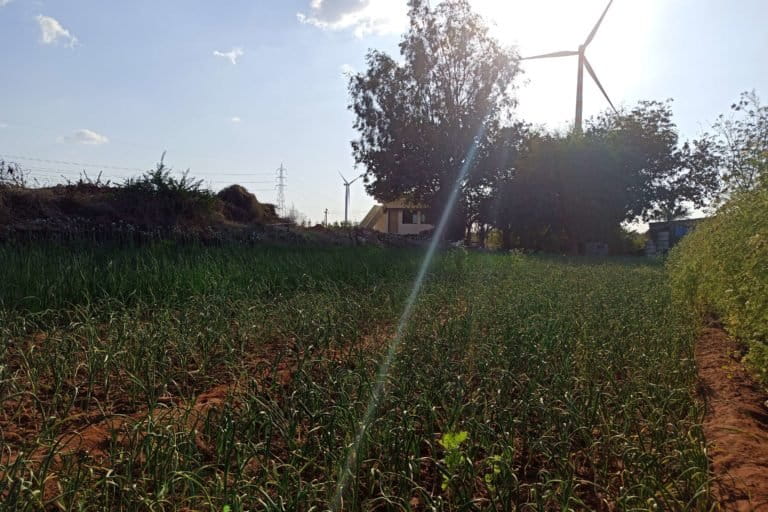- Environmental law needs a new way of seeing the environment.
- The approach, based in the procedures of environmental law, environment impact assessment, cumulative impact assessment, requires environmental entities and environmental costs to be understood in their entirety, and the consciousness to understand that they are equal to social or economic costs.
- Until environmental costs are seen equal to economic costs, construction projects will continue to be disguised as development projects and violation of environment law will continue to be ignored as technical irregularities, writes the author of this commentary.
- The views expressed in this commetary are that of the author.
Recently, the 2022 Environmental Performance Index projected that four countries – China, India, the United States, and Russia, will account for over 50% of residual global greenhouse gas emissions in 2050. A few weeks before that, the Intergovernmental Panel on Climate Change (IPCC) Sixth Assessment Report noted, as a final warning, that if global warming is to be limited to 1.5°C, immediate deep emissions reductions are essential across all sectors. At the launch of the IPCC Report, UN Secretary General, Antonio Guterres added, “(s)ome government and business leaders are saying one thing – but doing another. Simply put, they are lying. And the results will be catastrophic.”
Several final warnings on the consequences of climate change have been delivered without resulting in the substantial recognition of acts/omissions that contribute to it, to be recognised as legal wrongs with adequate remedies in India. Other than the absence of an act of parliament addressing the climate, one hurdle for the articulation of climate change as a legal wrong in India, is the perspective from which environmental issues are viewed. Despite widespread and accessible knowledge available on the far reaching consequences of climate change, the environmental crisis continues to be seen as a ‘pollution problem’. The restricted vantage point of the pollution paradigm is evident in the actions of environmentally irresponsible entities and how courts treat them.
The fundamental question in the pollution paradigm is: how much harm to the natural environment is permissible? Legal remedies under the pollution paradigm are restricted to a post-facto, pollution management exercise. Intricate ecosystems and the complex relationships that run them are broken into what are understood as separable parts of a whole – air, water, forest, wildlife. When hearing petitions challenging environmentally degrading projects, courts view violations of environmental law from the perspective of restitution and compensation. The degradation of one is understood to be substitutable by replenishing the other. For instance, issuing a direction to plant trees and install smog towers where a development project violates conditions of its environmental clearance, as the Supreme Court did in the Central Vista case. More recently in Pahwa Plastics the Supreme Court framed the question before it in these words: “The question in this case is, whether a unit contributing to the economy of the country and providing livelihood to hundreds of people, which has been set up pursuant to requisite approvals from the concerned statutory authorities, and has applied for ex post facto EC, should be closed down for the technical irregularity of want of prior environmental clearance, pending the issuance of EC, even though it may not cause pollution and/or may be found to comply with the required norms.”
Essentially, environmental law is not really law. Accommodating violations at the discretion of the court. This is similar to the current state of the law in some instances. Illustratively, the law at present does not require solar and wind energy projects to undergo environment impact assessments. As sources of green energy, where policy priorities are concentrated on pollution prevention, any other environmentally detrimental consequence is invisible. The result is that grasslands of Rajasthan and Gujarat were classified as wastelands, diverted for “development” of alternate energy and the state bird of Rajasthan, the Great Indian Bustard faces the fatal threat of power transmission lines, fighting for survival at the Supreme Court.
Read more: Are power lines turning Kutch into a bird graveyard from a bird paradise?
Pollution is undoubtedly urgent, ubiquitous, and transforming life from the cities to the coasts. It has however, transformed into the complete scope of the exercise of environment law in popular environmental consciousness and in courts. Resultantly, equally critical environmental concerns, consequences of environmentally irresponsible and importantly, illegal acts become ‘technical irregularities’ in this crusade.
An approach based in the procedures of environmental law, environment impact assessment, cumulative impact assessment for instance, requires environmental entities and environmental costs to be understood in their entirety, and the consciousness to understand that they are equal to social or economic costs. The fundamental test in this approach would be: Is the activity concerned necessary to meet an essential need which cannot be met by an environmentally acceptable alternative compliant with existing environment law?
The correct approach must see all that which makes the environment – rivers, forests, the animal kingdom, natural processes and other entities as equal to human beings and their ‘needs’. To look beyond direct human impact, measurable today and understand consequences not so far in the future as IPCC and EPI have warned.

A few developments in other jurisdictions are instructive. In the landmark Shell judgement of the Dutch Court, for the first time a court imposed a duty on a company to do its share to prevent dangerous climate change. The Court noted that the obligation on Shell to reduce emissions is an “obligation of result” and a “best-efforts obligation”. Therefore, to not just address pollution, but best efforts to curb emissions altogether. Any climate consciousness in law and policy must look beyond pollution.
In attempting to modernise international criminal law, Independent Expert Panel for the legal definition of ecocide, proposed to recognise ‘ecocide’ as international crime. Ecocide is defined as “as unlawful or wanton acts committed with knowledge that there is a substantial likelihood of severe and either widespread or long-term damage to the environment being caused by those acts”. Once adopted and incorporated with an amendment to the Rome Statute, this would be the only international crime that does not require direct human impact.
Glimpses of this approach are also evident in the rights of nature movement. Judgements and legislations across the world on the rights of nature are attempting to change the architecture of environment laws, to rescue them from the pollution paradigm, to envision environmental costs more completely, to humanise them in order for them to be finally seen as real costs and to use the language of rights to translate the environmental crisis into a final warning that many reports, judgements, statutes and scholarship have hoped to be. In this way the new way of seeing, is really the old way of seeing the environment, to inform the way we should engage with the environment. To make the environment and environmental issues alive as they have been in indigenous consciousness.
Naturalist Sy Montgomery in her book, Soul of an Octopus, chronicles the time spent at the New England public Aquarium in getting to know the octopuses it was home to. By the end of her time there, these gentle giants came to not only recognise her, they greeted and embraced her with their suckers. Montgomery describes the meeting of the minds of two species which could not be more different and yet no more similar, breathing water and eating with their mouths, in their armpits. ‘Getting to know’, describes the sense of moral equality the words deliver to this great giant of the sea. Montgomery quotes Henry Beston and, writes:
“In his classic ‘The Outermost House’, American naturalist Henry Beston writes that animals “are not brethren, they are not underlings” but beings “gifted with extensions of the senses we have lost or never attained, living by voices we shall never hear.” They are, he writes, “other nations, caught with ourselves in the net of life and time, fellow prisoners of the splendor and travail of the earth.” To many people, an octopus is not just another nation; it’s an alien from a distant and menacing galaxy. But to me, Athena was more than an Octopus. She was an individual- who I liked very much- and also possibly, a portal. She was leading me to a new way of thinking about thinking, of imagining what other minds might be like. And she was enticing me to explore, in a way I never had before, my own planet – a world of mostly water, which I hardly knew.”
If law is to become the forum to address the environmental crisis, environmental law needs to be understood and applied as law. Not as a set of negotiable, malleable principles that must accommodate all other costs ignoring the ecological. Courts of law need Thunberg-ian conviction, inspired by the courage of climate activist Greta Thunberg, to see and speak of the state of the environment as it is, in order for it to be treated as the legal wrong that it has always been
The author is an advocate practising at the Supreme Court, specialising in human rights and environmental law.
Banner image: Garbage burning near East Kolkata Wetlands. Currently, the environmental crisis is viewed only as a pollution problem despite the data and knowledge available on the consequences of climate change, writes Sugandha Yadav in a commentary. Photo by Biswarup Ganguly/Wikimedia Commons.













